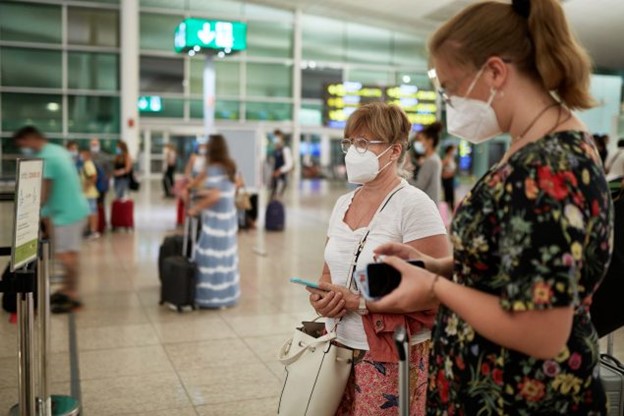Masking During Travel
CDC Respiratory Virus Guidance has been updated. The content of this page will be updated soon.

Respiratory infections are a leading cause for seeking medical care among returning travelers. Common respiratory infections include COVID-19, influenza, and the common cold. Masking is a critical public health tool for preventing the spread of respiratory diseases. When people properly wear a high-quality mask or respirator, they protect themselves and those around them, and help keep travel safer for everyone.
When is masking most useful?
Wearing a high-quality mask or respirator is most beneficial when:
- You are in crowded or tight spaces with poor ventilation like airport jetways, airplanes when the ventilation system is off, seaports, or when in close-contact situations like on a train or bus.
- There are high levels of respiratory disease at your travel destination or in the community you are traveling through.
- You or someone you have close contact with has a weakened immune system or are at increased risk for severe illness.
- You are sick or experiencing symptoms of a respiratory illness (although it is better to delay travel if you are sick).
- See specific recommendations for COVID-19.
- You were exposed to a person with COVID-19 in the last 10 days.
Why should I wear a mask when traveling if I don’t usually wear one in my community?
- Traveling can bring you in contact with people from many different places where viruses are spreading, including different COVID-19 variants and other viruses.
- Using public transportation and being in transportation hubs such as airports, can involve spending long periods of time in areas that may be crowded or poorly ventilated. This increases your chance of exposure to respiratory diseases.
- Wearing a mask during travel can also help protect others who cannot avoid being in crowded places when they are traveling. Some of these people might be more vulnerable, like babies under 6 months of age, persons over 65 years of age, or those with a weakened immune system.